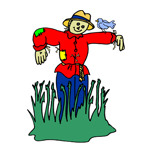 There are many fun yet highly educational therapy activities we can do with our preschool and school-aged clients in the fall. One of my personal favorites is bingo. Boggles World, an online ESL teacher resource actually has a number of ready-made materials, flashcards, and worksheets that can be adapted for speech-language therapy purposes. For example, their Fall and Halloween Bingo comes with both call out cards and a 3×3 and a 4×4 (as well as 3×3) card generator/boards. Clicking the refresh button will generate as many cards as you need, so the supply is endless! You can copy and paste the entire bingo board into a word document resize it and then print it out on reinforced paper or just laminate it. Continue reading Therapy Fun with Ready Made Fall and Halloween Bingo
There are many fun yet highly educational therapy activities we can do with our preschool and school-aged clients in the fall. One of my personal favorites is bingo. Boggles World, an online ESL teacher resource actually has a number of ready-made materials, flashcards, and worksheets that can be adapted for speech-language therapy purposes. For example, their Fall and Halloween Bingo comes with both call out cards and a 3×3 and a 4×4 (as well as 3×3) card generator/boards. Clicking the refresh button will generate as many cards as you need, so the supply is endless! You can copy and paste the entire bingo board into a word document resize it and then print it out on reinforced paper or just laminate it. Continue reading Therapy Fun with Ready Made Fall and Halloween Bingo
Category: play
Early Intervention Evaluations PART IV:Assessing Social Pragmatic Abilities of Children Under 3
 To date, I have written 3 posts on speech and language assessments of children under 3 years of age. My first post offered suggestions on what information to include in general speech-language assessments for this age group, my second post specifically discussed assessments of toddlers with suspected motor speech disorders and my third post described what information I tend to include in reports for children ~16-18 months of age.
To date, I have written 3 posts on speech and language assessments of children under 3 years of age. My first post offered suggestions on what information to include in general speech-language assessments for this age group, my second post specifically discussed assessments of toddlers with suspected motor speech disorders and my third post described what information I tend to include in reports for children ~16-18 months of age.
Today, I’d like to offer some suggestions on the assessment of social emotional functioning and pragmatics of children, ages 3 and under.
For starters, below is the information I found compiled by a number of researchers on select social pragmatic milestones for the 0-3 age group:
- Peters, Kimberly (2013) Hierarchy of Social/Pragmatic Skills as Related to the Development of Executive Function


- Hutchins & Prelock, (2016) Select Social Cognitive Milestones from the Theory of Mind Atlas

3. Development of Theory of Mind (Westby, 2014)
In my social pragmatic assessments of the 0-3 population, in addition, to the child’s adaptive behavior during the assessment, I also describe the child’s joint attention, social emotional reciprocity, as well as social referencing abilities.
Joint attention is the shared focus of two individuals on an object. Responding to joint attention refers to the child’s ability to follow the direction of the gaze and gestures of others in order to share a common point of reference. Initiating joint attention involves child’s use of gestures and eye contact to direct others’ attention to objects, to events, and to themselves. The function of initiating joint attention is to show or spontaneously seek to share interests or pleasurable experience with others. (Mundy, et al, 2007)
Social emotional reciprocity involves being aware of the emotional and interpersonal cues of others, appropriately interpreting those cues, responding appropriately to what is interpreted as well as being motivated to engage in social interactions with others (LaRocque and Leach,2009).
Social referencing refers to a child’s ability to look at a caregiver’s cues such as facial expressions, body language and tone of voice in an ambiguous situation in order to obtain clarifying information. (Walden & Ogan, 1988)
Here’s a brief excerpt from an evaluation of a child ~18 months of age:
“RA’s joint attention skills, social emotional reciprocity as well as social referencing were judged to be appropriate for his age. For example, when Ms. N let in the family dog from the deck into the assessment room, RA immediately noted that the dog wanted to exit the room and go into the hallway. However, the door leading to the hallway was closed. RA came up to the closed door and attempted to reach the doorknob. When RA realized that he cannot reach to the doorknob to let the dog out, he excitedly vocalized to get Ms. N’s attention, and then indicated to her in gestures that the dog wanted to leave the room.”
 If I happen to know that a child is highly verbal, I may actually include a narrative assessment, when evaluating toddlers in the 2-3 age group. Now, of course, true narratives do not develop in children until they are bit older. However, it is possible to limitedly assess the narrative abilities of verbal children in this age group. According to Hedberg & Westby (1993) typically developing 2-year-old children are at the Heaps Stage of narrative development characterized by
If I happen to know that a child is highly verbal, I may actually include a narrative assessment, when evaluating toddlers in the 2-3 age group. Now, of course, true narratives do not develop in children until they are bit older. However, it is possible to limitedly assess the narrative abilities of verbal children in this age group. According to Hedberg & Westby (1993) typically developing 2-year-old children are at the Heaps Stage of narrative development characterized by
- Storytelling in the form of a collection of unrelated ideas which consist of labeling and describing events
- Frequent switch of topic is evident with lack of central theme and cohesive devices
- The sentences are usually simple declarations which contain repetitive syntax and use of present or present progressive tenses
- In this stage, children possess limited understanding that the character on the next page is still same as on the previous page
In contrast, though typically developing children between 2-3 years of age in the Sequences Stage of narrative development still arbitrarily link story elements together without transitions, they can:
- Label and describe events about a central theme with stories that may contain a central character, topic, or setting
 To illustrate, below is a narrative sample from a typically developing 2-year-old child based on the Mercer Mayer’s classic wordless picture book: “Frog Where Are You?”
To illustrate, below is a narrative sample from a typically developing 2-year-old child based on the Mercer Mayer’s classic wordless picture book: “Frog Where Are You?”
- He put a froggy in there
- He’s sleeping
- Froggy came out
- Where did did froggy go?
- Now the dog fell out
- Then he got him
- You are a silly dog
- And then
- where did froggy go?
- In in there
- Up up into the tree
- Up there an owl
- Froggy
- A reindeer caught him
- Then he dropped him
- Then he went into snow
- And then he cleaned up that
- Then stopped right there and see what wha wha wha what he found
- He found two froggies
- They lived happily ever after
 Of course, a play assessment for this age group is a must. Since, in my first post, I offered a play skills excerpt from one of my early intervention assessments and in my third blog post, I included a link to the Revised Westby Play Scale (Westby, 2000), I will now move on to the description of a few formal instruments I find very useful for this age group.
Of course, a play assessment for this age group is a must. Since, in my first post, I offered a play skills excerpt from one of my early intervention assessments and in my third blog post, I included a link to the Revised Westby Play Scale (Westby, 2000), I will now move on to the description of a few formal instruments I find very useful for this age group.
While some criterion-referenced instruments such as the Rossetti, contain sections on Interaction-Attachment and Pragmatics, there are other assessments which I prefer for evaluating social cognition and pragmatic abilities of toddlers.
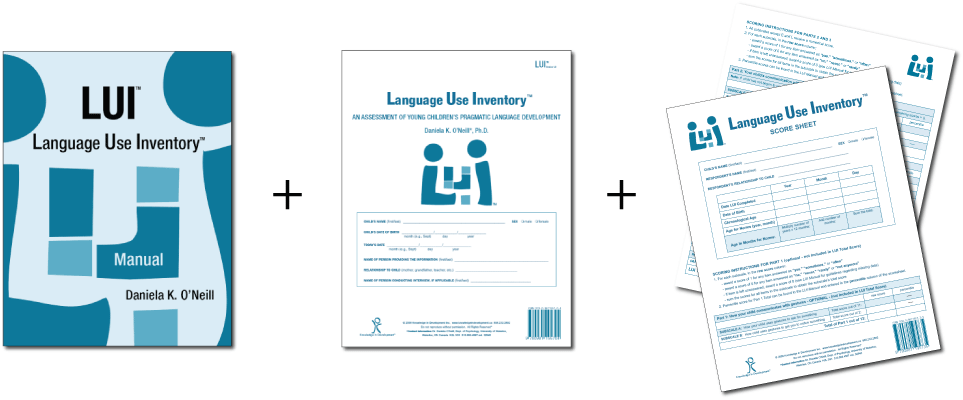 For toddlers 18+months of age, I like using the Language Use Inventory (LUI) (O’Neill, 2009) which is administered in the form of a parental questionnaire that can be completed in approximately 20 minutes. Aimed at identifying children with delay/impairment in pragmatic language development it contains 180 questions and divided into 3 parts and 14 subscales including:
For toddlers 18+months of age, I like using the Language Use Inventory (LUI) (O’Neill, 2009) which is administered in the form of a parental questionnaire that can be completed in approximately 20 minutes. Aimed at identifying children with delay/impairment in pragmatic language development it contains 180 questions and divided into 3 parts and 14 subscales including:
- Communication w/t gestures
- Communication w/t words
- Longer sentences
Therapists can utilize the Automated Score Calculator, which accompanies the LUI in order to generate several pages write up or summarize the main points of the LUI’s findings in their evaluation reports.
Below is an example of a summary I wrote for one of my past clients, 35 months of age.
AN’s ability to use language was assessed via the administration of the Language Use Inventory (LUI). The LUI is a standardized parental questionnaire for children ages 18-47 months aimed at identifying children with delay/impairment in pragmatic language development. Composed of 3 parts and 14 subscales it focuses on how the child communicates with gestures, words and longer sentences.
On the LUI, AN obtained a raw score of 53 and a percentile rank of <1, indicating profoundly impaired performance in the area of language use. While AN scored in the average range in the area of varied word use, deficits were noted with requesting help, word usage for notice, lack of questions and comments regarding self and others, lack of reciprocal word usage in activities with others, humor relatedness, adapting to conversations to others, as well as difficulties with building longer sentences and stories.
Based on above results AN presents with significant social pragmatic language weaknesses characterized by impaired ability to use language for a variety of language functions (initiate, comment, request, etc), lack of reciprocal word usage in activities with others, humor relatedness, lack of conversational abilities, as well as difficulty with spontaneous sentence and story formulation as is appropriate for a child his age. Therapeutic intervention is strongly recommended to improve AN’s social pragmatic abilities.
 In addition to the LUI, I recently discovered the Theory of Mind Inventory-2. The ToMI-2 was developed on a normative sample of children ages 2 – 13 years. For children between 2-3 years of age, it offers a 14 question Toddler Screen (shared here with author’s permission). While due to the recency of my discovery, I have yet to use it on an actual client, I did have fun creating a report with it on a fake client.
In addition to the LUI, I recently discovered the Theory of Mind Inventory-2. The ToMI-2 was developed on a normative sample of children ages 2 – 13 years. For children between 2-3 years of age, it offers a 14 question Toddler Screen (shared here with author’s permission). While due to the recency of my discovery, I have yet to use it on an actual client, I did have fun creating a report with it on a fake client.
First, I filled out the online version of the 14 question Toddler Screen (paper version embedded in the link above for illustration purposes). Typically the parents are asked to place slashes on the form in relevant areas, however, the online version requested that I use numerals to rate skill acquisition, which is what I had done. After I had entered the data, the system generated a relevant report for my imaginary client. In addition to the demographic section, the report generated the following information (below):
- A bar graph of the client’s skills breakdown in the developed, undecided and undeveloped ranges of the early ToM development scale.
- Percentile scores of how the client did in the each of the 14 early ToM measures
- Median percentiles of scores
- Table for treatment planning broken down into strengths and challenges
I find the information provided to me by the Toddler Screen highly useful for assessment and treatment planning purposes and definitely have plans on using this portion of the TOM-2 Inventory as part of my future toddler evaluations.
Of course, the above instruments are only two of many, aimed at assessing social pragmatic abilities of children under 3 years of age, so I’d like to hear from you! What formal and informal instruments are you using to assess social pragmatic abilities of children under 3 years of age? Do you have a favorite one, and if so, why do you like it?
References:
- Hedberg, N.L., & Westby, C.E. (1993). Analyzing story-telling skills: Theory to practice. AZ: Communication Skill Builders.
- Mundy P, Block J, Delgado C, Pomares Y, Vaughan Van Hecke A, Parlade MV. (2007) Individual Differences and the Development of Joint Attention in Infancy. Child Development. 78:938–954
- LaRocque, M., & Leach, D. (2009). Increasing social reciprocity in young children with Autism. Intervention in School and Clinic, 10(5), 1-7.
- O’Neill, D. (2009). Language Use Inventory: An assessment of young children’s pragmatic language development for 18- to 47-month-old children [Manual]. Waterloo, Ontario, Canada Knowledge in Development
- Tomasello, M. (1995). Joint attention as social cognition. In C. Moore, & P. J. Dunham (Eds.), Joint attention: It’s origins and role in development (pp. 103–130). Hillsdale, NJ: Erlbaum.
- Walden, T., & Ogan, T. (1988). The development of social referencing. Child Development, 59, 1230-1240.
- Westby, C. & Robinson, L. (2014). A developmental perspective for promoting theory of mind. Topics in
Language Disorders, 34(4), 362-383.
Early Intervention Evaluations PART III: Assessing Children Under 2 Years of Age
 In this post, I am continuing my series of articles on speech and language assessments of children under 3 years of age. My first installment in this series offered suggestions regarding what information to include in general speech-language assessments for this age group, while my second post specifically discussed assessments of toddlers with suspected motor speech disorders.
In this post, I am continuing my series of articles on speech and language assessments of children under 3 years of age. My first installment in this series offered suggestions regarding what information to include in general speech-language assessments for this age group, while my second post specifically discussed assessments of toddlers with suspected motor speech disorders.
Today, I’d like to describe what information I tend to include in reports for children ~16-18 months of age. As I mentioned in my previous posts, the bulk of children I assess under the age of 3, are typically aged 30 months or older. However, a relatively small number of children are brought in for an assessment around an 18-month mark, which is the age group that I would like to discuss today.
Typically, these children are brought in due to a lack of or minimal speech-language production. Interestingly enough, based on the feedback of colleagues, this group is surprisingly hard to report on. While all SLPs will readily state that 18-month-old children are expected to have a verbal vocabulary of at least 50 words and begin to combine them into two-word utterances (e.g., ‘daddy eat’). When prompted: “Well, what else should my child be capable of?” many SLPs draw a blank regarding what else to say to parents on the spot.
 As mentioned in my previous post on assessment of children under 3, the following sections should be an integral part of every early intervention speech-language assessment:
As mentioned in my previous post on assessment of children under 3, the following sections should be an integral part of every early intervention speech-language assessment:
- Background History
- Language Development and Use (Free Questionnaires)
- Adaptive Behavior
- Play Assessment (Westby, 2000) (Westby Play Scale-Revised Link)
- Auditory Function
- Oral Motor Exam
- Feeding and Swallowing
- Vocal Parameters
- Fluency and Resonance
- Articulation and Phonology
- Phonetic inventory
- Phonotactic Repertoire
- Speech intelligibility
- Phonological Processes Analysis (Independent and Relational)
- Receptive Language
- Expressive Language
- Social Emotional Development
- Pragmatic Language
- Impressions
- Recommendations
- Suggested Therapy Goals
- References (if pertinent to a particular report)
In my two previous posts, I’ve also offered examples of select section write-ups (e.g., receptive, expressive phonology, etc.). Below a would like to offer a few more for this age group. Below is an example of a write-up on an 18-month-old bilingual child with a very limited verbal output.
RECEPTIVE LANGUAGE:
L’s receptive language skills were solid at 8 months of age (as per clinical observations and REEL-3 findings) which is significantly below age-expectancy for a child her age (18 months). During the assessment L received credit for appropriately reacting to prohibitive verbalizations (e.g., “No”, “Stop”), attending to speaker when her name was spoken, performing a routine activity upon request (when combined with gestures), looking at familiar object when named, finding the aforementioned familiar object when not in sight, as well as pointing to select body parts on Mrs. L and self (though identification on self was limited). L is also reported to be able to respond to yes/no questions by head nods and shakes.
However, during the assessment L was unable to consistently follow 1 and 2 step directions without gestural cues, understand and perform simple actions per clinician’s request, select objects from a group of 3-5 items given a verbal command, select familiar puzzle pieces from a visual field of 2 choices, understand simple ‘wh questions (e.g., “what?”, “where?”), point to objects or pictures when named, identify simple pictures of objects in book, or display the knowledge and understanding of age appropriate content, function and early concept words (in either Russian or English) as is appropriate for a child her age.
EXPRESSIVE LANGUAGE and ARTICULATION
L’s expressive language skills were judged to be solid at 7 months of age (as per clinical observations and REEL-3 findings), which is significantly below age-expectancy for a child her age (18 months). L was observed to spontaneously use proto-imperative gestures (eye gaze, reaching, and leading [by hand]), vocalizations, as well waving for the following language functions: requesting, rejecting, regulating own environment as well as providing closure (waving goodbye).
L’s spontaneous vocalizations consisted primarily of reduplicated babbling (with a limited range of phonemes) which is significantly below age-expectancy for a child her age (see below for developmental norms). During the assessment, L was observed to frequently vocalize “da-da-da”. However, it was unclear whether she was vocalizing to request objects (in Russian “dai” means “give”) due to the fact that she was not observed to consistently vocalize the above solely when requesting items. Additionally, L was not observed to engage in reciprocal babbling or syllable/word imitation during today’s assessment, which is a concern for a child her age. When the examiner attempted to engage L in structured imitation tasks by offering and subsequently denying a toy of interest until L attempted to imitate the desired sound, L became easily frustrated and initiated tantrum behavior. During the assessment, L was not observed to imitate any new sounds trialed with her by the examiner.
During today’s assessment, L’s primary means of communication consisted of eye gaze, reaching, crying, gestures, as well as sound and syllable vocalizations. L’s phonetic inventory consisted of the following consonant sounds: plosives (/p/, /b/ as reported by Mrs. L), alveolars (/t/, /d/ as reported and observed), fricative (/v/ as observed), velar (/g/ as observed), as well as nasal (/n/, and /m/ as observed). L was also observed to produce two vowels /a/ and a pharyngeal /u/. L’s phonotactic repertoire was primarily restricted to reported CV(C-consonant; V-vowel) and VCV syllable shapes, which is significantly reduced for a child her age.
According to developmental norms, a child of L’s age (18 months) is expected to produce a wide variety of consonants (e.g., [b, d, m, n, h, w] in initial and [t, h, s] in final position of words) as well as most vowels. (Robb, & Bleile,(1994); Selby, Robb & Gilbert, 2000). During this time the child’s vocabulary size increases to 50+ words at which point children begin to combine these words to produce simple phrases and sentences (as per Russian and English developmental norms). Additionally, an, 18 months old child is expected to begin monitoring and repairing own utterances, adjusting speech to different listeners, as well as practicing sounds, words, and early sentences. (Clark, adapted by Owens, 2015)
Based on the above guidelines L’s receptive and expressive language, as well as articulation abilities, are judged to be significantly below age expectancy at this time. Speech and language therapy is strongly recommended in order to improve L’s speech and language skills.
Typically when the assessed young children exhibit very limited comprehension and expression, I tend to provide their caregivers with a list of developmental expectations for that specific age group (given the range of a few months) along with recommendations of communication facilitation. Below is an example of such a list, pulled a variety of resources.
 Developmental Milestones expected of a 16-18 months old toddler:
Developmental Milestones expected of a 16-18 months old toddler:
Attention/Gaze:
- Make frequent spontaneous eye contact with adults during interactions
- Turn head to look towards the new voice, when another person begins to talk
- Make 3-point gaze shifts by 1. looking at a toy in hand, 2. then at an adult, 3. then back to the toy
- Make 4-point gaze shifts if more than one person is in the room – by looking from a toy in hand to one person, then the other person, then back to the toy,
- Spontaneously attend to book, activity for 2-3+ minutes without redirection
Reaching and Gestures:
- Show objects in hand to an adult (without actually giving them)
- Push away items that aren’t wanted
- Engage in give and take games when holding objects with an adult
- Imitate simple gestures such as clapping hands or waving bye-bye
- Hand an object to an adult to ask for help with it
- Shake head “no?”
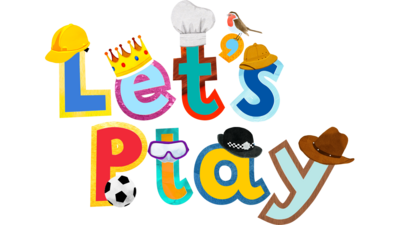 Play Skills/Routines:
Play Skills/Routines:
- Attempt to actively explore toys (e.g., push or spin parts of toys, turn toys over, roll them back and forth)
- Repeat interesting actions with toys (e.g., make a toy produce an unusual noise, then attempt to make the noise again)
- Imitate simple play activities (adult bangs two blocks together, then child imitates)
- Use objects on daily basis (e.g., when given a spoon or cup the child attempts to feed himself. When putting on clothes the child begins to lift his arms in anticipation of a shirt going on.)
Receptive (Listening Skills):
- Consistently follow 1 and 2 step directions without gestural cues
- Understand and perform simple actions per request (“sit down” or “come here”) without gestures
- Select objects from a group of 3 items given a verbal command
- Select familiar puzzle pieces from a visual field of 2 choices
- Understand simple ‘wh questions (e.g., “what?”, “where?”)
- Point to objects or pictures when named
- Spontaneously and consistently identify simple pictures of objects in book
- Stop momentarily what he is doing if an adult says “no” in a firm voice
- Identify 2-3 common everyday objects or body parts when asked
Expressive (Speaking Skills):
- Produce a wide variety of consonants (e.g., [b, d, m, n, h, w] in initial and [t, h, s] in final position of words) as well as most vowels. (Robb, & Bleile,(1994); Selby, Robb & Gilbert, 2000).
- Have a vocabulary size nearing 50 words (e.g., 35-40)
- Imitate adult words or vocalizations
- Attempt to practice sounds and words (Clark, adapted by Owens, 2015)
- Appropriately label familiar objects (foods, toys, animals)
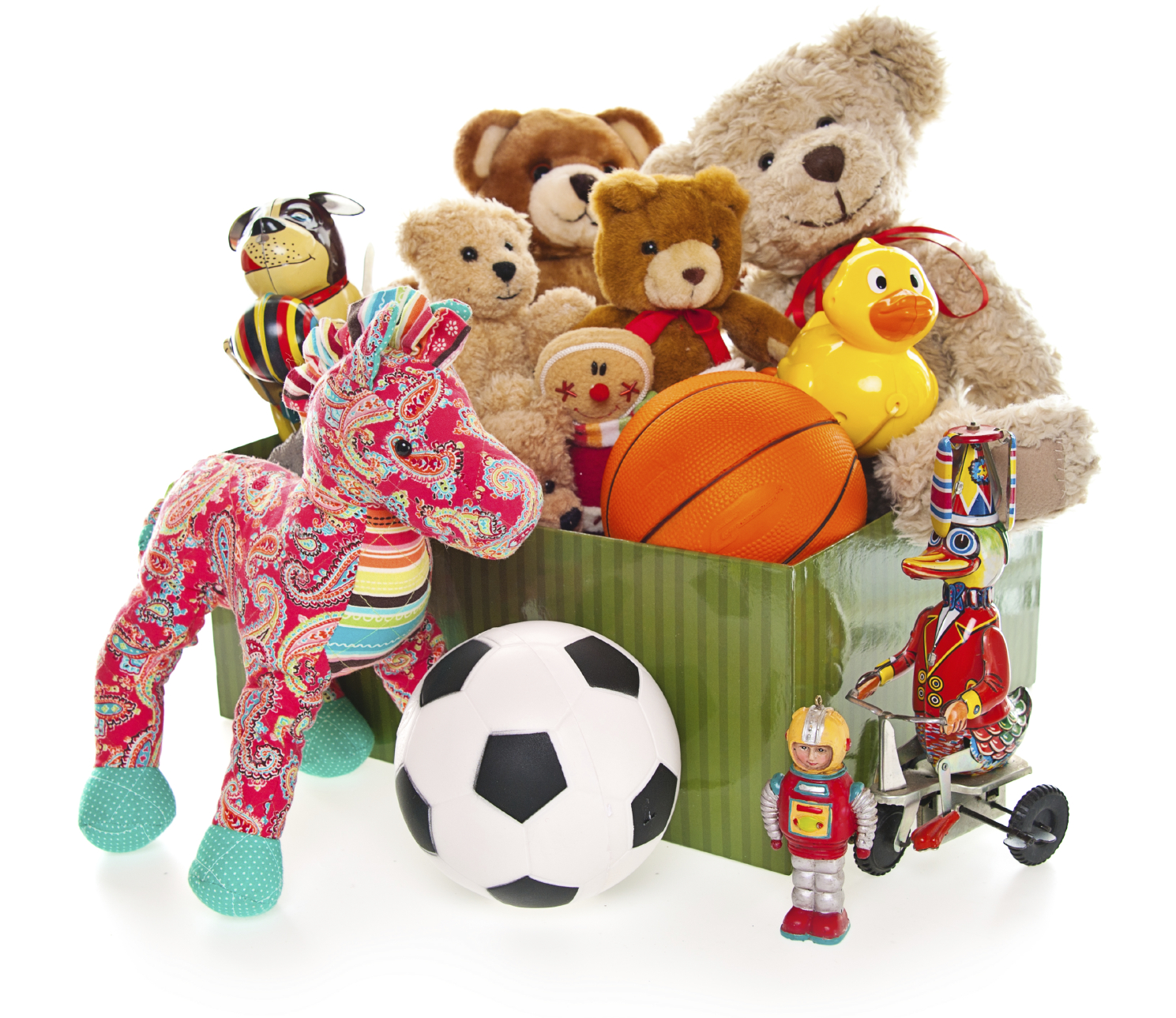 Materials to use with the child to promote language and play:
Materials to use with the child to promote language and play:
- Bubbles
- Cause and effect toys
- Toys with a variety of textures (soft toys, plastic toys, cardboard blocks, ridged balls)
- Toys with multiple actions
- Toys with special effects: lights, sounds, movement (push and go vehicles)
- Building and linking toys
- Toys with multiple parts
- Balls, cars and trucks, animals, dolls
- Puzzles
- Pop-up picture books
- Toys the child demonstrates an interest in (parents should advise)
Strategies:
- Reduce distractions (noise, clutter etc)
- Provide one on one interaction in a structured space (e.g., sitting at the play table or sitting on parent’s lap) to improve attention
- Offer favorite activities and toys of interest initially before branching out to new materials
- Offer favorite foods/toys as reinforcers to continue working
- Offer choices of two toys, then remove one toy and focus interaction with one toy of interest
- Try to prolong attention to toy for several minutes at a time
- Change activities frequently, HOWEVER, repeat same activities in cycles over and over again during home practice in order to solidify skills
- Label objects and actions in the child’s immediate environment
- Use brief but loud utterances (2-3 words not more) to gain attention and understanding
- Frequently repeat words in order to ensure understanding of what is said/expected of child
- Use combination of gestures, signs, words, and pictures to teach new concepts
- Do not force child to speak if he doesn’t want to rather attempt to facilitate production of gestures/sounds (e.g., use “hand over hand” to show child the desired gesture such as pointing/waving/motioning in order to reduce his/her frustration
- Use play activities as much as possible to improve child’s ability to follow directions and comprehend language
- Doll House (with Little People)
- Garage
- Farm, etc
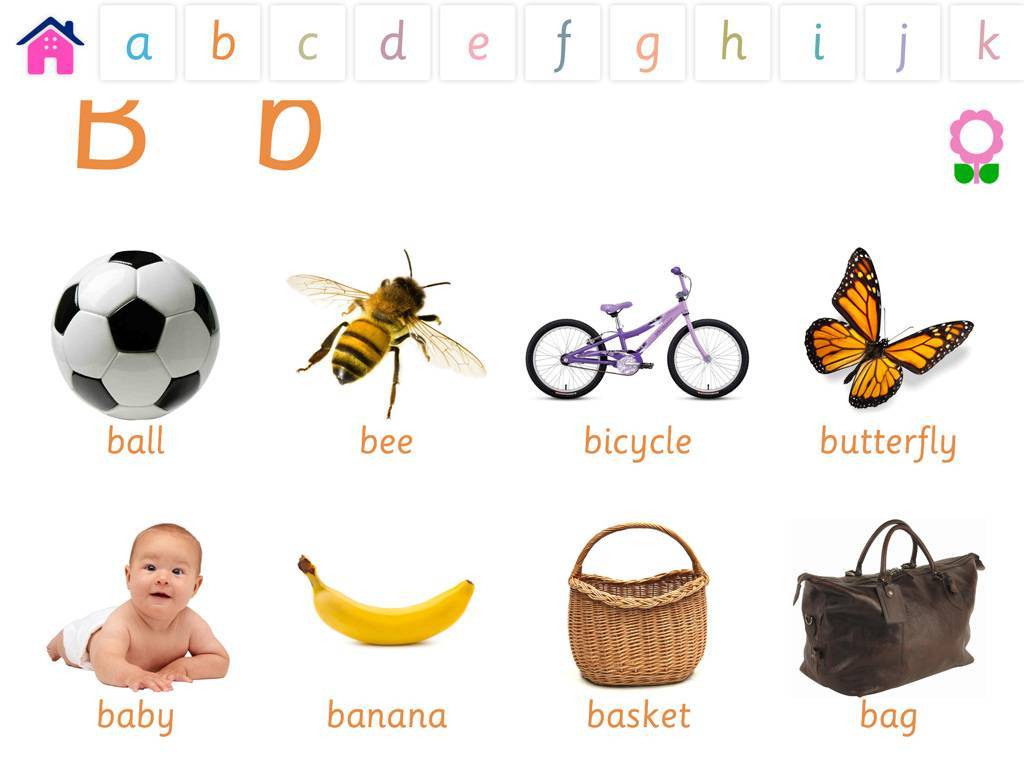 Core vocabulary categories for listening and speaking:
Core vocabulary categories for listening and speaking:
- Favorite and familiar toys and objects
- Names of people in the child’s life as well as his own name
- Pets
- Favorite or familiar foods
- Clothing
- Body parts
- Names of daily activities and actions (go, fall, drink, eat, walk, wash, open)
- Recurrence (more)
- Names of places (bed, outside)
- Safety words (hot, no, stop, dangerous, hurt, don’t touch, yuck, wait)
- Condition words (boo-boo, sick/hurt, mad, happy)
- Early pronouns (me, mine)
- Social words (hi, bye, please, sorry)
- Early concepts: in, off, on, out, big, hot, one, up, down, yucky, wet, all done)
- Yes/no
Select References:
- Owens, R. E. (2015). Language development: An introduction (9th ed.). Boston, MA: Allyn & Bacon.
- Rescorla, L. (1989). The Language Development Survey: A screening tool for delayed language in toddlers. Journal of Speech and Hearing Disorders, 54, 587–599.
- Rescorla, L., Hadicke-Wiley, M., & Escarce, E. (1993). Epidemiological investigation of expressive language delay
at age two. First Language, 13, 5–22. - Robb, M. P., & Bleile, K. M. (1994). Consonant inventories of young children from 8 to 25 months. Clinical Linguistics and Phonetics, 8, 295-320.
- Selby, J. C., Robb, M. P., & Gilbert, H. R. (2000). Normal vowel articulations between 15 and 36 months of age. Clinical Linguistics and Phonetics, 14, 255-266.
Click HERE for the Early Intervention Evaluations PART IV: Assessing Pragmatic Abilities of Children Under 3
Stay Tuned for the next installment in this series:
- Early Intervention Evaluations PART V: Assessing Feeding and Swallowing in Children Under Two
Early Intervention Evaluations PART I: Assessing 2.5 year olds
 Today, I’d like to talk about speech and language assessments of children under three years of age. Namely, the quality of these assessments. Let me be frank, I am not happy with what I am seeing. Often times, when I receive a speech-language report on a child under three years of age, I am struck by how little functional information it contains about the child’s linguistic strengths and weaknesses. Indeed, conversations with parents often reveal that at best the examiner spent no more than half an hour or so playing with the child and performed very limited functional testing of their actual abilities. Instead, they interviewed the parent and based their report on parental feedback alone. Consequently, parents often end up with a report of very limited value, which does not contain any helpful information on how delayed is the child as compared to peers their age.
Today, I’d like to talk about speech and language assessments of children under three years of age. Namely, the quality of these assessments. Let me be frank, I am not happy with what I am seeing. Often times, when I receive a speech-language report on a child under three years of age, I am struck by how little functional information it contains about the child’s linguistic strengths and weaknesses. Indeed, conversations with parents often reveal that at best the examiner spent no more than half an hour or so playing with the child and performed very limited functional testing of their actual abilities. Instead, they interviewed the parent and based their report on parental feedback alone. Consequently, parents often end up with a report of very limited value, which does not contain any helpful information on how delayed is the child as compared to peers their age.
So today I like to talk about what information should such speech-language reports should contain. For the purpose of this particular post, I will choose a particular developmental age at which children at risk of language delay are often assessed by speech-language pathologists. Below you will find what information I typically like to include in these reports as well as developmental milestones for children 30 months or 2.5 years of age.
 Why 30 months, you may ask? Well, there isn’t really any hard science to it. It’s just that I noticed that a significant percentage of parents who were already worried about their children’s speech-language abilities when they were younger, begin to act upon those worries as the child is nearing 3 years of age and their abilities are not improving or are not commensurate with other peers their age.
Why 30 months, you may ask? Well, there isn’t really any hard science to it. It’s just that I noticed that a significant percentage of parents who were already worried about their children’s speech-language abilities when they were younger, begin to act upon those worries as the child is nearing 3 years of age and their abilities are not improving or are not commensurate with other peers their age.
So here is the information I include in such reports (after I’ve gathered pertinent background information in the form of relevant intakes and questionnaires, of course). Naturally, detailed BACKGROUND HISTORY section is a must! Prenatal, perinatal, and postnatal development should be prominently featured there. All pertinent medical history needs to get documented as well as all of the child’s developmental milestones in the areas of cognition, emotional development, fine and gross motor function, and of course speech and language. Here, I also include a family history of red flags: international or domestic adoption of the child (if relevant) as well as familial speech and language difficulties, intellectual impairment, psychiatric disorders, special education placements, or documented deficits in the areas of literacy (e.g., reading, writing, and spelling). After all, if any of the above issues are present in isolation or in combination, the risk for language and literacy deficits increases exponentially, and services are strongly merited for the child in question.
For bilingual children, the next section will cover LANGUAGE BACKGROUND AND USE. Here, I describe how many and which languages are spoken in the home and how well does the child understand and speak any or all of these languages (as per parental report based on questionnaires).
After that, I move on to describe the child’s ADAPTIVE BEHAVIOR during the assessment. In this section, I cover emotional relatedness, joint attention, social referencing, attention skills, communicative frequency, communicative intent, communicative functions, as well as any and all unusual behaviors noted during the therapy session (e.g., refusal, tantrums, perseverations, echolalia, etc.) Then I move on to PLAY SKILLS. For the purpose of play assessment, I use the Revised Westby Play Scale (Westby, 2000). In this section, I describe where the child is presently with respect to play skills, and where they actually need to be developmentally (excerpt below).
“During today’s assessment, LS’s play skills were judged to be significantly reduced for his age. A child of LS’s age (30 months) is expected to engage in a number of isolated pretend play activities with realistic props to represent daily experiences (playing house) as well as less frequently experienced events (e.g., reenacting a doctor’s visit, etc.) (corresponds to Stage VI on the Westby Play Scale, Revised Westby Play Scale (Westby, 2000)). Contrastingly, LS presented with limited repertoire routines, which were characterized primarily by exploration of toys, such as operating simple cause and effect toys (given modeling) or taking out and then putting back in playhouse toys. LS’s parents confirmed that the above play schemas were representative of play interactions at home as well. Today’s LS’s play skills were judged to be approximately at Stage II (13 – 17 months) on the Westby Play Scale, (Revised Westby Play Scale (Westby, 2000)) which is significantly reduced for a child of LS’s age, since it is almost approximately ±15 months behind his peers. Thus, based on today’s play assessment, LS’s play skills require therapeutic intervention. “
Sections on AUDITORY FUNCTION, PERIPHERAL ORAL MOTOR EXAM, VOCAL PARAMETERS, FLUENCY AND RESONANCE (and if pertinent FEEDING and SWALLOWING follow) (more on that in another post).
Now, it’s finally time to get to the ‘meat and potatoes’ of the report ARTICULATION AND PHONOLOGY as well as RECEPTIVE and EXPRESSIVE LANGUAGE (more on PRAGMATIC ASSESSMENT in another post).
First, here’s what I include in the ARTICULATION AND PHONOLOGY section of the report.
- Phonetic inventory: all the sounds the child is currently producing including (short excerpt below):
- Consonants: plosive (/p/, /b/, /m/), alveolar (/t/, /d/), velar (/k/, /g/), glide (/w/), nasal (/n/, /m/) glottal (/h/)
- Vowels and diphthongs: ( /a/, /e/, /i/, /o/, /u/, /ou/, /ai/)
- Phonotactic repertoire: What type of words comprised of how many syllables and which consonant-vowel variations the child is producing (excerpt below)
- LS primarily produced one syllable words consisting of CV (e.g., ke, di), CVC (e.g., boom), VCV (e.g., apo) syllable shapes, which is reduced for a child his age.
- Speech intelligibility in known and unknown contexts
- Phonological processes analysis
Now that I have described what the child is capable of speech-wise, I discuss where the child needs to be developmentally:
“A child of LS’s age (30 months) is expected to produce additional consonants in initial word position (k, l, s, h), some consonants (t, d, m, n, s, z) in final word position (Watson & Scukanec, 1997b), several consonant clusters (pw, bw, -nd, -ts) (Stoel-Gammon, 1987) as well as evidence a more sophisticated syllable shape structure (e.g., CVCVC) Furthermore, a 30 month old child is expected to begin monitoring and repairing own utterances, adjusting speech to different listeners, as well as practicing sounds, words, and early sentences (Clark, adapted by Owens, 1996, p. 386) all of which LS is not performing at this time. Based on above developmental norms, LS’s phonological abilities are judged to be significantly below age-expectancy at this time. Therapy is recommended in order to improve LS’s phonological skills.”
 At this point, I am ready to move on to the language portion of the assessment. Here it is important to note that a number of assessments for toddlers under 3 years of age contain numerous limitations. Some such as REEL-3 or Rosetti (a criterion-referenced vs. normed-referenced instrument) are observational or limitedly interactive in nature, while others such as PLS-5, have a tendency to over inflate scores, resulting in a significant number of children not qualifying for rightfully deserved speech-language therapy services. This is exactly why it’s so important that SLPs have a firm knowledge of developmental milestones! After all, after they finish describing what the child is capable of, they then need to describe what the developmental expectations are for a child this age (excerpts below).
At this point, I am ready to move on to the language portion of the assessment. Here it is important to note that a number of assessments for toddlers under 3 years of age contain numerous limitations. Some such as REEL-3 or Rosetti (a criterion-referenced vs. normed-referenced instrument) are observational or limitedly interactive in nature, while others such as PLS-5, have a tendency to over inflate scores, resulting in a significant number of children not qualifying for rightfully deserved speech-language therapy services. This is exactly why it’s so important that SLPs have a firm knowledge of developmental milestones! After all, after they finish describing what the child is capable of, they then need to describe what the developmental expectations are for a child this age (excerpts below).
RECEPTIVE LANGUAGE
“LS’s receptive language abilities were judged to be scattered between 11-17 months of age (as per clinical observations as well as informal PLS-5 and REEL-3 findings), which is also consistent with his play skills abilities (see above). During the assessment LS was able to appropriately understand prohibitive verbalizations (e.g., “No”, “Stop”), follow simple 1 part directions (when repeated and combined with gestures), selectively attend to speaker when his name was spoken (behavioral), perform a routine activity upon request (when combined with gestures), retrieve familiar objects from nearby (when provided with gestures), identify several major body parts (with prompting) on a doll only, select a familiar object when named given repeated prompting, point to pictures of familiar objects in books when named by adult, as well as respond to yes/no questions by using head shakes and head nods. This is significantly below age-expectancy.
A typically developing child 30 months of age is expected to spontaneously follow (without gestures, cues or prompts) 2+ step directives, follow select commands that require getting objects out of sight, answer simple “wh” questions (what, where, who), understand select spatial concepts, (in, off, out of, etc), understand select pronouns (e.g., me, my, your), identify action words in pictures, understand concept sizes (‘big’, ‘little’), identify simple objects according to their function, identify select clothing items such as shoes, shirt, pants, hat (on self or caregiver) as well as understand names of farm animals, everyday foods, and toys. Therapeutic intervention is recommended in order to increase LS’s receptive language abilities.
EXPRESSIVE LANGUAGE:
“During today’s assessment, LS’s expressive language skills were judged to be scattered between 10-15 months of age (as per clinical observations as well as informal PLS-5 and REEL-3 findings). LS was observed to communicate primarily via proto-imperative gestures (requesting and object via eye gaze, reaching) as well as proto-declarative gestures (showing an object via eye gaze, reaching, and pointing). Additionally, LS communicated via vocalizations, head nods, and head shakes. According to parental report, at this time LS’s speaking vocabulary consists of approximately 15-20 words (see word lists below). During the assessment LS was observed to spontaneously produce a number of these words when looking at a picture book, playing with toys, and participating in action based play activities with Mrs. S and clinician. LS was also observed to produce a number of animal sounds when looking at select picture books and puzzles. For therapy planning purposes, it is important to note that LS was observed to imitate more sounds and words, when they were supported by action based play activities (when words and sounds were accompanied by a movement initiated by clinician and then imitated by LS). Today LS was observed to primarily communicate via a very limited number of imitated and spontaneous one word utterances that labeled basic objects and pictures in his environment, which is significantly reduced for his age.
A typically developing child of LS’s chronological age (30 months) is expected to possess a minimum vocabulary of 200+ words (Rescorla, 1989), produce 2-4 word utterance combinations (e.g., noun + verb, verb + noun + location, verb + noun + adjective, etc), in addition to asking 2-3 word questions as well as maintaining a topic for 2+ conversational turns. Therapeutic intervention is recommended in order to increase LS’s expressive language abilities.”
Here you have a few speech-language evaluation excerpts which describe not just what the child is capable of but where the child needs to be developmentally. Now it’s just a matter of summarizing my IMPRESSIONS (child’s strengths and needs), RECOMMENDATIONS as well as SUGGESTED (long and short term) THERAPY GOALS. Now the parents have some understanding regarding their child’s strengths and needs. From here, they can also track their child’s progress in therapy as they now have some idea to what it can be compared to.
 Now I know that many of you will tell me, that this is a ‘perfect world’ evaluation conducted by a private therapist with an unlimited amount of time on her hands. And to some extent, many of you will be right! Yes, such an evaluation was a result of more than 30 minutes spent face-to-face with the child. All in all, it took probably closer to 90 minutes of face to face time to complete it and a few hours to write. And yes, this is a luxury only a few possess and many therapists in the early intervention system lack. But in the long run, such evaluations pay dividends not only, obviously, to your clients but to SLPs who perform them. They enhance and grow your reputation as an evaluating therapist. They even make sense from a business perspective. If you are well-known and highly sought after due to your evaluating expertise, you can expect to be compensated for your time, accordingly. This means that if you decide that your time and expertise are worth private pay only (due to poor insurance reimbursement or low EI rates), you can be sure that parents will learn to appreciate your thoroughness and will choose you over other providers.
Now I know that many of you will tell me, that this is a ‘perfect world’ evaluation conducted by a private therapist with an unlimited amount of time on her hands. And to some extent, many of you will be right! Yes, such an evaluation was a result of more than 30 minutes spent face-to-face with the child. All in all, it took probably closer to 90 minutes of face to face time to complete it and a few hours to write. And yes, this is a luxury only a few possess and many therapists in the early intervention system lack. But in the long run, such evaluations pay dividends not only, obviously, to your clients but to SLPs who perform them. They enhance and grow your reputation as an evaluating therapist. They even make sense from a business perspective. If you are well-known and highly sought after due to your evaluating expertise, you can expect to be compensated for your time, accordingly. This means that if you decide that your time and expertise are worth private pay only (due to poor insurance reimbursement or low EI rates), you can be sure that parents will learn to appreciate your thoroughness and will choose you over other providers.
So, how about it? Can you give it a try? Trust me, it’s worth it!
Selected References:
- Owens, R. E. (1996). Language development: An introduction (4th ed.). Boston, MA: Allyn & Bacon.
- Rescorla, L. (1989). The Language Development Survey: A screening tool for delayed language in toddlers. Journal of Speech and Hearing Disorders, 54, 587–599.
- Selby, J. C., Robb, M. P., & Gilbert, H. R. (2000). Normal vowel articulations between 15 and 36 months of age. Clinical Linguistics and Phonetics, 14, 255-266.
- Stoel-Gammon, C. (1987). Phonological skills of 2-year-olds. Language, Speech, and Hearing Services in Schools, 18, 323-329.
- Watson, M. M., & Scukanec, G. P. (1997b). Profiling the phonological abilities of 2-year-olds: A longitudinal investigation. Child Language Teaching and Therapy, 13, 3-14.
For more information on EI Assessments click on any of the below posts:
- Part II: Early Intervention Evaluations PART II: Assessing Suspected Motor Speech Disorders in Children Under 3
- Part III: Early Intervention Evaluations PART III: Assessing Children Under 2 Years of Age
- Part IV: Early Intervention Evaluations PART IV:Assessing Social Pragmatic Abilities of Children Under 3
Creating A Learning Rich Environment for Language Delayed Preschoolers
 Today I’m excited to introduce a new product: “Creating A Learning Rich Environment for Language Delayed Preschoolers“. This 40 page presentation provides suggestions to parents regarding how to facilitate further language development in language delayed/impaired preschoolers at home in conjunction with existing outpatient, school, or private practice based speech language services. It details implementation strategies as well as lists useful materials, books, and websites of interest.
Today I’m excited to introduce a new product: “Creating A Learning Rich Environment for Language Delayed Preschoolers“. This 40 page presentation provides suggestions to parents regarding how to facilitate further language development in language delayed/impaired preschoolers at home in conjunction with existing outpatient, school, or private practice based speech language services. It details implementation strategies as well as lists useful materials, books, and websites of interest.
It is intended to be of interest to both parents and speech language professionals (especially clinical fellows and graduates speech pathology students or any other SLPs switching populations) and not just during the summer months. SLPs can provide it to the parents of their cleints instead of creating their own materials. This will not only save a significant amount of time but also provide a concrete step-by-step outline which explains to the parents how to engage children in particular activities from bedtime book reading to story formulation with magnetic puzzles.
Product Content:
- The importance of daily routines
- The importance of following the child’s lead
- Strategies for expanding the child’s language
- Self-Talk
- Parallel Talk
- Expansions
- Extensions
- Questioning
- Use of Praise
- A Word About Rewards
- How to Begin
- How to Arrange the environment
- Who is directing the show?
- Strategies for facilitating attention
- Providing Reinforcement
- Core vocabulary for listening and expression
- A word on teaching vocabulary order
- Teaching Basic Concepts
- Let’s Sing and Dance
- Popular toys for young language impaired preschoolers (3-4 years old)
- Playsets
- The Versatility of Bingo (older preschoolers)
- Books, Books, Books
- Book reading can be an art form
- Using Specific Story Prompts
- Focus on Story Characters and Setting
- Story Sequencing
- More Complex Book Interactions
- Teaching vocabulary of feelings and emotions
- Select favorite authors perfect for Pre-K
- Finding Intervention Materials Online The Easy Way
- Free Arts and Crafts Activities Anyone?
- Helpful Resources
Are you a caregiver, an SLP or a related professional? DOES THIS SOUND LIKE SOMETHING YOU CAN USE? if so you can find it HERE in my online store.
Useful Smart Speech Therapy Resources:
- Assessment Checklist for Preschool Aged Children
- Creating Functional Therapy Plan
- Selecting Clinical Materials for Pediatric Therapy
- Language Processing Checklist for Preschool Children
- Social Pragmatic Deficits Checklist for Preschool Children
- Recognizing the Warning Signs of Social Emotional Difficulties in Language Impaired Toddlers and Preschoolers
- Executive Function Impairments in At-Risk Pediatric Populations
References:
Heath, S. B (1982) What no bedtime story means: Narrative skills at home and school. Language in Society, vol. 11 pp. 49-76.
Useful Websites:
http://www.beyondplay.com
http://www.superdairyboy.com/Toys/magnetic_playsets.html
http://www.educationaltoysplanet.com/
http://www.melissaanddoug.com/shop.phtml
http://www.dltk-cards.com/bingo/
http://bogglesworldesl.com/
http://www.childrensbooksforever.com/index.html
Tips Corner: Creating Opportunities for Spontaneous and Functional Communication
 In today’s guest post, Natalie Romanchukevich advises readers on how to create opportunities to expand children’s spontaneous communication skills.
In today’s guest post, Natalie Romanchukevich advises readers on how to create opportunities to expand children’s spontaneous communication skills.
Helping young children build speech- language skills is an exciting job that both caregivers and educators try to do every second of the day. We spend so much time giving our children directions to follow, asking them a ton of questions, and modeling words and phrases to shape them into eloquent communicators.
What I find we do NOT do enough, sometimes, is hold back on our never ending “models” of what or how to say things, questions, and directions, instead of allowing our children initiate and engage with us. Greenspan refers to these initiations as opening circles of communication (Weirder & Greenspan “Engaging Autism”, 2006).
Speech- language development can be thought of as having three interacting and equally important domains- Form ,Content, and Use (Lahey, 1988).
Form refers to the grammatical correctness of our words and sentences (eat vs. eat+ ing).
Content is what the we are essentially communicating- the meaning of our words and sentences.
Use (also known as pragmatics) refers to the function of our words or for what purpose we are using them.

The communicative functions that slowly emerge and characterize communication over the course of language acquisition in vary in typically developing young children. Children communicate to greet others, comment on objects/actions, request desired objects, request assistance, protest, deny (a statement), ask questions, regulate others (e.g. “blow!”, “open!”), entertain, and narrate events.
In order for children to be able to express these functions, aside from the intent to communicate, there must also be opportunities to express ideas, wants, needs. For example, why would Timmy request for an object (nonverbally or verbally) if the caregiver hands everything to the child at the slightest sign of a tantrum. Why ask a “where?” question if every toy or beloved object is comfortably in sight? Why ask for help if the caregiver readily assists the child with all activities. The educators describe it as assuming the child’s needs.
Of course we do it out of love and care for the child, and, let’s be honest, sometimes, to save time. However, it is important with both typical and delayed children to be mindful of what (form, content, use) we model, when (timing is crucial in teaching) we model it, how (facial expression, tone of voice, etc) we model it, and why (is it developmentally important to teach it now?) we model it at this very moment.
Just as it is important for kids to comprehend concepts, follow directions, and understand the different wh- questions, it is also paramount that your child is able to initiate communication. After all, communication is the ability to express ideas, thoughts, and wants, not just understand those expressed by others. Answering questions and following commands is not initiating. Language that is elicited by us- is not spontaneous.
To use language spontaneously, effortlessly and creatively, children need opportunities to practice the skill, to experience taking the lead. In order for our children to get there, we must first offer models of how to initiate communication and do so appropriately. We can then create opportunities for the child to speak up.
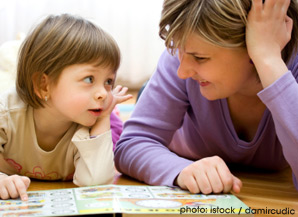
The most basic strategies you can use to encourage spontaneous initiations (whether nonverbal or verbal) may seem seem initially as counterintuitive. I mean what is the point to introducing attractive new toys or displaying a yummy snack and then putting it away? Yet it is exactly that action which may very much encourage your child to run after you with gestures or words. Even then, you may still choose to play “dumb” and be “unsure” as to what it is your child wants. Does s/he want that bag with new toy or snack “opened?” and “out?”
If the child is nonverbal, his use of gestures to regulate your actions to get the desired item out and open may be the child’s initial step toward sound imitation. If you are working on getting the child to request help (not just objects), here is your opportunity to model “help” if the child can’t open the item independently. On a side note, I often hear educators model “help me please!” when the child is clearly at a single word level. This is not a developmental way of teaching. Yes, it is nice to hear a full sentence but your child may not be ready for it.
While playing with your child and actively commenting on your joint play, you may find it productive to suddenly become quiet and cease all attempts to ask questions. This often works beautifully in my therapy sessions; usually, after I have engaged the child into some sort of cooperative and enjoyable play! But it takes a conscious effort and self-control on the part of the adult, since we are so used to engaging in this adult- directed (telling the child what to do as opposed to letting him/her lead and you follow) approach to teaching.

However, once you are able to contain your speech and actions (I promise you it is possible), you may be surprised to hear some immediate or delayed imitations of words/ phrases as well as spontaneous meaningful language. The language produced, to me, is an indication that the child wants more of the experience- more language enriched play. Use this opportunity to expand on what s/he is already saying.
Here, timing is really important as you want to imitate back everything your child is doing. This is another way to communicate with your child. Build on your child’s language to further describe the objects or people in play without using long sentences. So, allowing nothing to happen for a few minutes at a time may just be the push to help your child come out with some form of communication.
In addition, stopping a novel activity or toy exploration at the very height of your child’s excitement also works well with many children. You don’t have to be confrontational about it, “if you don’t imitate my word/ phrase I just won’t give it back to you”. make sure to create these “obstructions”, as Greenspan refers to them, in a friendly, playful and positive manner. Obstructions or fabricated “problems” are also a big part of social-cognitive and constructivist theories of language learning.
The idea behind these “obstructions” is that the children are forced to problem solve and use resources (language being one of them!) so they can get what they want. Allowing your child to problem solve is critical to overall cognitive development that affects and shapes speech and language. Presenting your child with developmentally appropriate activities that involve thinking and figuring out of how to get X is an invaluable strategy that I always use with all of my children.
In sum, stop access to items that are already loved, tape up containers, close boxes and jars with favorite snack and toys, give your child all but ONE important item that is needed to complete an activity (glue, scissors), give your child the “wrong” item, or offer the “wrong” solution to the problem. All of these “problems” will push the kid to think and figure out what to do next. This, in turn, facilitates spontaneous language use.
Letting go of control and just allowing for things to spill, break, or simply not follow the predictable comfortable routine, too, elicits a ton of speech- language and fun communication. These are the most teachable moments as our children experience all the new words and concepts first hand. Perhaps, this is why many children learn “dirty” or “wet” attributes before they learn their colors. These concepts are more easily learned because they are experiential and bring about relevant words to describe these personally relevant and emotional experiences. Cleaning up and taking turns arranging things back in place is super educational too as our children need to learn responsibility and helping others.
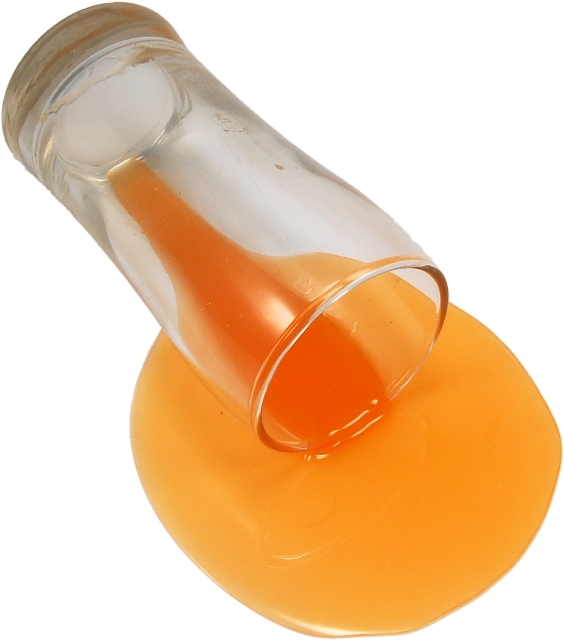
Moreover, exposing children to objects that are completely novel and foreign (but safe!) may help elicit an attempt to ask a question “what this?” because the child wants to know. The motivation is there. Now s/he needs language to get the answer from you. Some children may use a word with a rising intonation, which too is a question form, just not grammatically mature one. For example, “Hat?” is as much of a question as “Is that a hat?!”. If all your child is capable of verbalizing is “wow”, then you can go ahead and model “what IS that?” question a few times. Of course, you want to pair it up with an exaggerated expression of surprise and excitement in your voice.
To sum up, do not be afraid to experiment, get “messy”, stay silent, entice, intrigue and just wait for a few minutes to see what your child will do. Yes, we want to teach our children to attend, sit down for a structured activity, and identify objects, shapes, colors, and actions; but these adult- directed activities do not allow for self- expression or spontaneous language use. You also want to follow your child’s natural interests and inclinations as this is frequently a way into their world. If you show interest in your friend’s ideas and you let him/her speak, will they not want to bond with you even more? Will they not want to communicate with you?
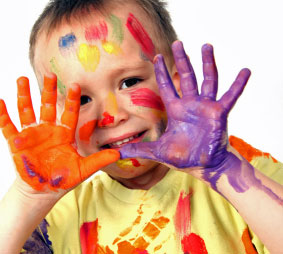
Creative and talented teachers are those who can use unconventional materials presented in unexpected ways while targeting all the skills that must be learned! Learning to manipulate the environment to get the most out of your child’s skills can be difficult but indescribably rewarding.
References:
- Lahey, M. (1988). Language disorders and Language Development.
- Greenspan, S. & Weider, S. (2006). Engaging Autism: Using the Floortime approach to help children related, communicate, and think.
- Wetherby, A. & Prizant, B. (1990). Communication and Symbolic Behavior Scales. ChicagoIL: Applied Symblix.
Natalie Romanchukevich has a MS in Communication Sciences and Disorders from Long Island University (LIU) as well as Bilingual (Russian/English) Certification, which allows her to practice speech- language pathology in both Russian and English. Following graduation, Natalie has been working with both monolingual and bilingual 0- 5 population in New York City, and has been an active advocate for preschoolers with disabilities in her present setting. Natalie’s clinical interests and experience have been focused on early childhood speech- language delays and disorders including speech disorders (e.g., Articulation, Childhood Apraxia of Speech (CAS), Pervasive Developmental Disorders, Autistic Spectrum Disorders, Auditory Processing Disorders, Specific Language Impairment (SLI), as well as Feeding Disorders. Presently she is working on developing her private practice in Brooklyn, NY.
Recognizing the Warning Signs of Social Emotional Difficulties in Language Impaired Toddlers and Preschoolers
 Today I am exited to tell you about the new product I created in honor of Better Speech and Hearing Month.
Today I am exited to tell you about the new product I created in honor of Better Speech and Hearing Month.
It is a 45 slide presentation created for speech language pathologists to explain the connection between late language development and the risk of social emotional disturbances in young children 18 months- 6 years of age.
Learning Objectives:
- Explain the connection between late language development and social emotional functioning
- Describe manifestations of emotional behavioral difficulties in young children with language deficits
- List formal and informal assessments relevant to toddlers and preschoolers
- Explain why the warning signs of significant emotional behavioral manifestations in young children warrant a referral to related professionals
In case you missed it: Therapy Fun with Ready Made Spring Related Bingo
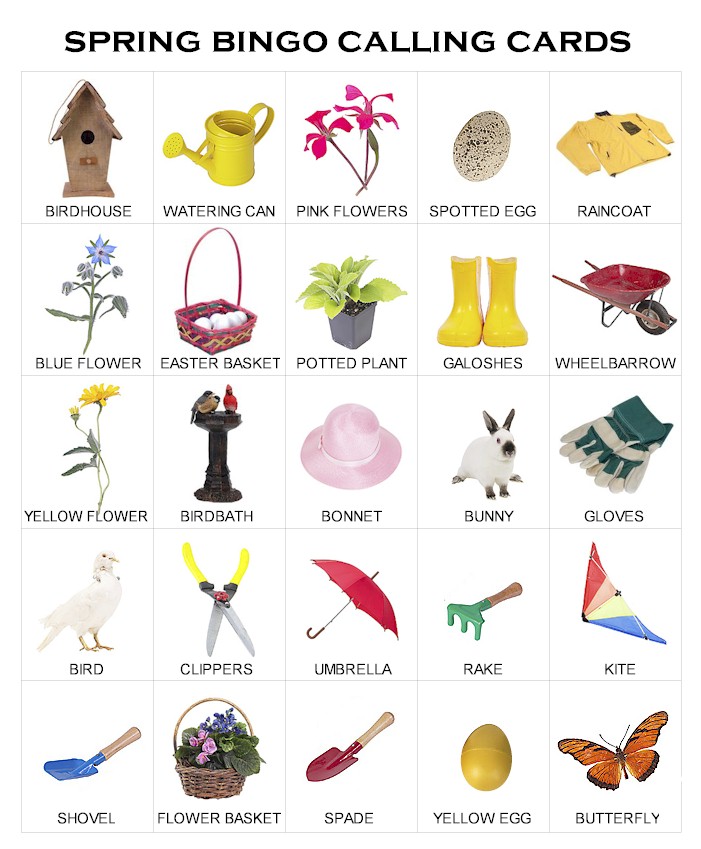 Back in late February I did a guest post for Teach Speech 365. In case you missed it I am running it again on my blog since spring is now in full bloom!
Back in late February I did a guest post for Teach Speech 365. In case you missed it I am running it again on my blog since spring is now in full bloom!
Spring is here and there are many fun therapy activities you can do with your preschool and school aged clients during this time of year. Now, while many of my colleagues are great at creating their own therapy materials, I am personally not that handy. If you are like me, it’s perfectly okay since there are plenty of free materials that you can find online and adopt for your speech language purposes.
Making Friends, an online craft store, and Boggles World, an online ESL teacher resource, are two such websites, which have a number of ready-made materials, crafts, flashcards, and worksheets that can be adapted for speech language therapy purposes. One of my personal favorites from both sites is bingo. I actually find it to be a pretty versatile activity, which can be used in a number of different ways in the speech room.
Let’s start with “Spring” bingo from the Making Friends Website, since its well suited for preschool aged children. The game comes with both call-out cards and 12-4×4 card printable boards that can be printed out on card stock or just laminated. Continue reading In case you missed it: Therapy Fun with Ready Made Spring Related Bingo
Stimulating Language Abilities of Internationally Adopted Children: Fun with Ready-Made Fall and Halloween Bingo


 There are many fun language based activities parents can do at home with their newly (and not so newly) internationally adopted preschool and school aged children in the fall. One of my personal favorites is bingo. Boggles World, an online ESL teacher resource actually has a number of ready made materials, flashcards, and worksheets which can be adapted for such purposes. For example, their Fall and Halloween Bingo comes with both call out cards and a 3×3 and a 4×4 (as well as 3×3) card generator/boards. Clicking the refresh button will generate as many cards as you need, so the supply is endless! You can copy and paste the entire bingo board into a word document resize it and then print it out on reinforced paper or just laminate it.
There are many fun language based activities parents can do at home with their newly (and not so newly) internationally adopted preschool and school aged children in the fall. One of my personal favorites is bingo. Boggles World, an online ESL teacher resource actually has a number of ready made materials, flashcards, and worksheets which can be adapted for such purposes. For example, their Fall and Halloween Bingo comes with both call out cards and a 3×3 and a 4×4 (as well as 3×3) card generator/boards. Clicking the refresh button will generate as many cards as you need, so the supply is endless! You can copy and paste the entire bingo board into a word document resize it and then print it out on reinforced paper or just laminate it.
Fall vocabulary words include: corn, crops, farmer, scarecrow, apples, acorns, oak leaf, maple leaves, ginkgo leaves, grapes, mushrooms, salmon, geese, squirrel, jacket, turkey, Jack-O’-Lantern, rake, pumpkins, harvest moon, hay, chestnuts, crow, and sparrow
Halloween vocabulary words include: witch, ghost, skeleton, skull, spider, owl, Jack-O’-Lantern, devil, cobweb, graveyard, clown, pirate, robot, superhero, mummy, vampire, bat, black cat, trick or treaters, alien, werewolf
|
|
|||
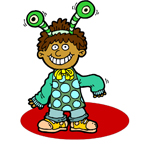 |
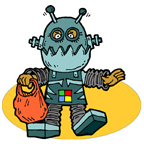 |
 |
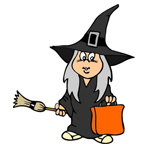 |
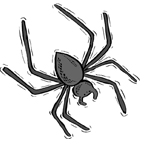 |
 |
 |
 |
 |
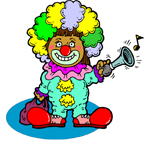 |
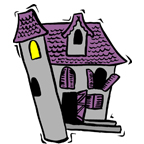 |
 |
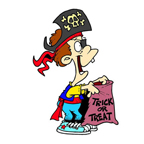 |
 |
 |
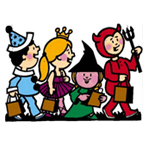 |
Now the fun begins!
Some suggested activities:
Practice Vocabulary Labeling: Label the words for newly adopted IA children and get them to say the words after you.
Practice Simple Sentences: Make up simple sentences such as A spider lives in a cobweb or A squirrel is eating an acorn.
Practice Rhyming: what rhymes with cat/bat/ trick/leaf/ rake/moon?
For those children who are having articulation (speech) difficulties practice saying words with select sounds (/ch/, /sh/, /l/, etc) to improve their intelligibility (pronunciation)
Practice Categorization Skills: Name some fall words, Halloween words, name some popular halloween costumes, name some popular fall activities, etc
Practice naming Associations: what goes with a witch (broom), what goes with a squirrel (acorn), etc
Practice expanding vocabulary by providing Attributes (object characteristics): Take a noun-word (thing) such as “squirrel” and answer some questions about it: what is it? what does it do? where do you find it? what are its parts? What color/shape is it? does it make any sounds? what goes with it. Here’s one example, (I see a pumpkin. It’s a fruit/vegetable that you can plant, grow and eat. You find it on a farm. It’s round and orange and is the size of a ball. Inside the pumpkin are seeds. You can carve it and make a jack o lantern out of it).
Practice expanding language by providing relevant Definitions: Tell me what a skeleton is. Tell me what a scarecrow is.
Practice improving their Problem Solving abilities by naming Similarities and Differences among semantically related items: How are pumpkin and apple alike? How are they different?
Help them understand that many words can have more than one meaning and explain Multiple Meaning words to them: A bat, witch, clown, can mean _____ and also mean _________
So join in the fun and start playing today! 
Resources:
Bogglesworld Halloween Bingo Board and Cards http://bogglesworldesl.com/halloweenbingo.htm
Bogglesworld Fall Bingo Board and Cards http://bogglesworldesl.com/autumn_bingo.htm
Fun and Educational Summer Board Games: Recommendations for SLPs and Parents
 According to the New York Times Article which summarized the results of Johns Hopkins University study: A TYPICAL STUDENT WILL LOSE ABOUT ONE MONTH OF LEARNING OVER THE SUMMER TIME.
According to the New York Times Article which summarized the results of Johns Hopkins University study: A TYPICAL STUDENT WILL LOSE ABOUT ONE MONTH OF LEARNING OVER THE SUMMER TIME.
“More troubling is that it disproportionately affects low-income students: they lose two months of reading skills, while their higher-income peers — whose parents can send them to enriching camps, take them on educational vacations and surround them with books during the summer — make slight gains.” To continue: “the study of students in Baltimore found that about two-thirds of the achievement gap between lower- and higher-income ninth graders could be explained by summer learning loss during the elementary school years.”
BUMMER!
But then again it is summer and kids do want to have fun!
So with the recent heatwaves across the country, how about combining fun with learning on those sweltering summer days when lazing at the pool or going outside may not be the best option.
Let’s take a look at the few common and readily available board games, which can be used to improve various language abilities: including vocabulary knowledge, problem solving, questioning, storytelling as well as other language related skills.
 A to Z Jr– a game of early categorizations is recommended for players 5 – 10 years of age, but can be used with older children depending on their knowledge base. The object of the game is to cover all letters on your letter board by calling out words in specific categories before the timer runs out. This game can be used to increase word finding abilities in children with weak language skills as the categories range from simple (e.g., basic concepts) to more complicated (e.,. attributes). This game is great for several players of different age groups, since younger children or children with weaker knowledge and language skills can answer simpler questions and learn the answers to the harder questions as other players get their turn.
A to Z Jr– a game of early categorizations is recommended for players 5 – 10 years of age, but can be used with older children depending on their knowledge base. The object of the game is to cover all letters on your letter board by calling out words in specific categories before the timer runs out. This game can be used to increase word finding abilities in children with weak language skills as the categories range from simple (e.g., basic concepts) to more complicated (e.,. attributes). This game is great for several players of different age groups, since younger children or children with weaker knowledge and language skills can answer simpler questions and learn the answers to the harder questions as other players get their turn.
 Tribond Jr – is another great game which purpose is to determine how 3 seemingly random items are related to one another. Good for older children 7-12 years of age it’s also great for problem solving and reasoning as some of the answers are not so straight forward (e.g., what do the clock, orange and circle have in common? Psst…they are all round)
Tribond Jr – is another great game which purpose is to determine how 3 seemingly random items are related to one another. Good for older children 7-12 years of age it’s also great for problem solving and reasoning as some of the answers are not so straight forward (e.g., what do the clock, orange and circle have in common? Psst…they are all round)
Password Jr-is a great game to develop the skills of description. In the game you guess passwords based on the one word clues. This game is designed to play with children ages 7 years and older as long as you help the non readers with the cards. It’s great for encouraging children to become both better at describing and at listening. You may want to allow the children to select the word they want to describe in order to boost their confidence in own abilities. Provide visual cheat sheets (listing ways we can describe something such as: what does it do, where does it go, how can we use it etc) to the child as they will be much more likely to provide more complete descriptions of the target words given visual cues.
 Blurt – a game for children 10 and up is a game that works on a simple premise. Blurt out as many answers as you can in order to guess what the word is. Blurt provides ready-made definitions that you read off to players so they could start guessing what the word is. Players and teams use squares on the board strategically to advance by competing in various definition challenges that increase language opportunities.
Blurt – a game for children 10 and up is a game that works on a simple premise. Blurt out as many answers as you can in order to guess what the word is. Blurt provides ready-made definitions that you read off to players so they could start guessing what the word is. Players and teams use squares on the board strategically to advance by competing in various definition challenges that increase language opportunities.
Games the facilitate asking questions:  Guess Who (age 6+),
Guess Who (age 6+),  Guess Where (age 6+), and Mystery Garden (age 4+) are great for encouraging students to ask relevant questions in order to be the first to win the game. They are also terrific for encouraging reasoning skills. Questions have to be thought through carefully in order to be the first one to win the game.
Guess Where (age 6+), and Mystery Garden (age 4+) are great for encouraging students to ask relevant questions in order to be the first to win the game. They are also terrific for encouraging reasoning skills. Questions have to be thought through carefully in order to be the first one to win the game.
Game that facilitates Story Telling as well as Perspective Taking: Fib or Not (ages 10+) encourages the players to fool other players by either telling an outlandish true story or a truly believable made up story. For the players who are listening to the story, the objective is to correctly guess if the story teller is fibbing or being truthful. Players advance by fooling the other players or by guessing correctly.
Games that improve verbal reasoning and problem solving abilities: 30 Second Mysteries (ages 8-12) and 20 Questions for Kids (ages 7+).
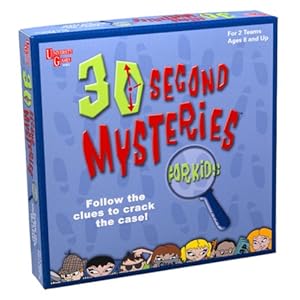 In 30 Second Mysteries kids need to use critical thinking and deductive reasoning in order to solve mysteriously sounding cases of everyday events. Each clue read aloud reveals more about the mystery and the trick is to solve it given the fewest number of clues in order to gain the most points.
In 30 Second Mysteries kids need to use critical thinking and deductive reasoning in order to solve mysteriously sounding cases of everyday events. Each clue read aloud reveals more about the mystery and the trick is to solve it given the fewest number of clues in order to gain the most points.
In 20 Questions for Kids, a guessing game of people, places, and things. Children need to generate original questions in order to obtain information. Here again, each clue read aloud reveals more about the secret identity and the trick is to solve it given the fewest number of clues.
Now that you know which games to play and why, how about you give it a try.
Have fun playing!
References:
Smink, J (2011) This is Your Brain on Summer. New York Times: The Opinion Pages. http://www.nytimes.com/2011/07/28/opinion/28smink.html?_r=1








